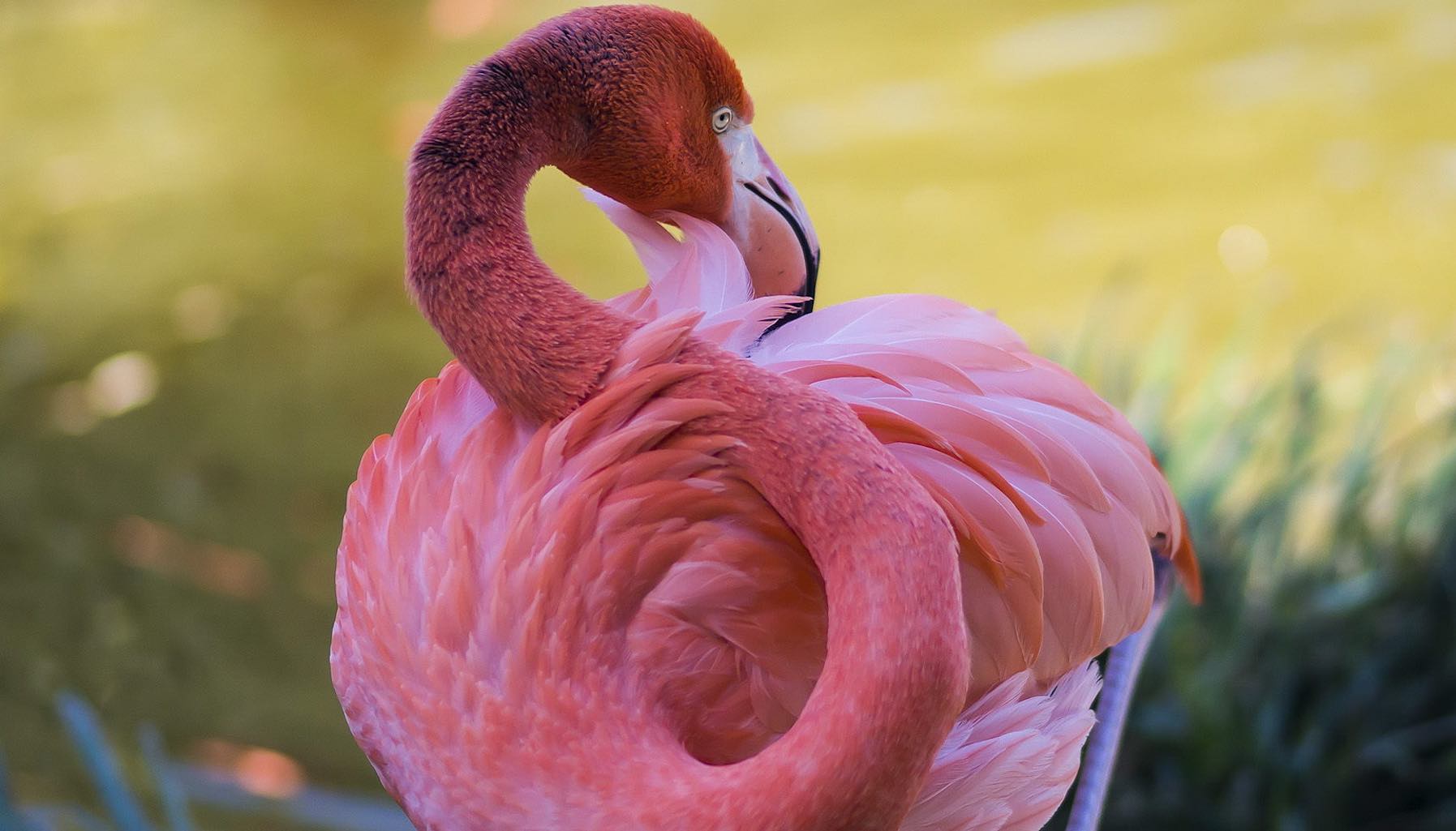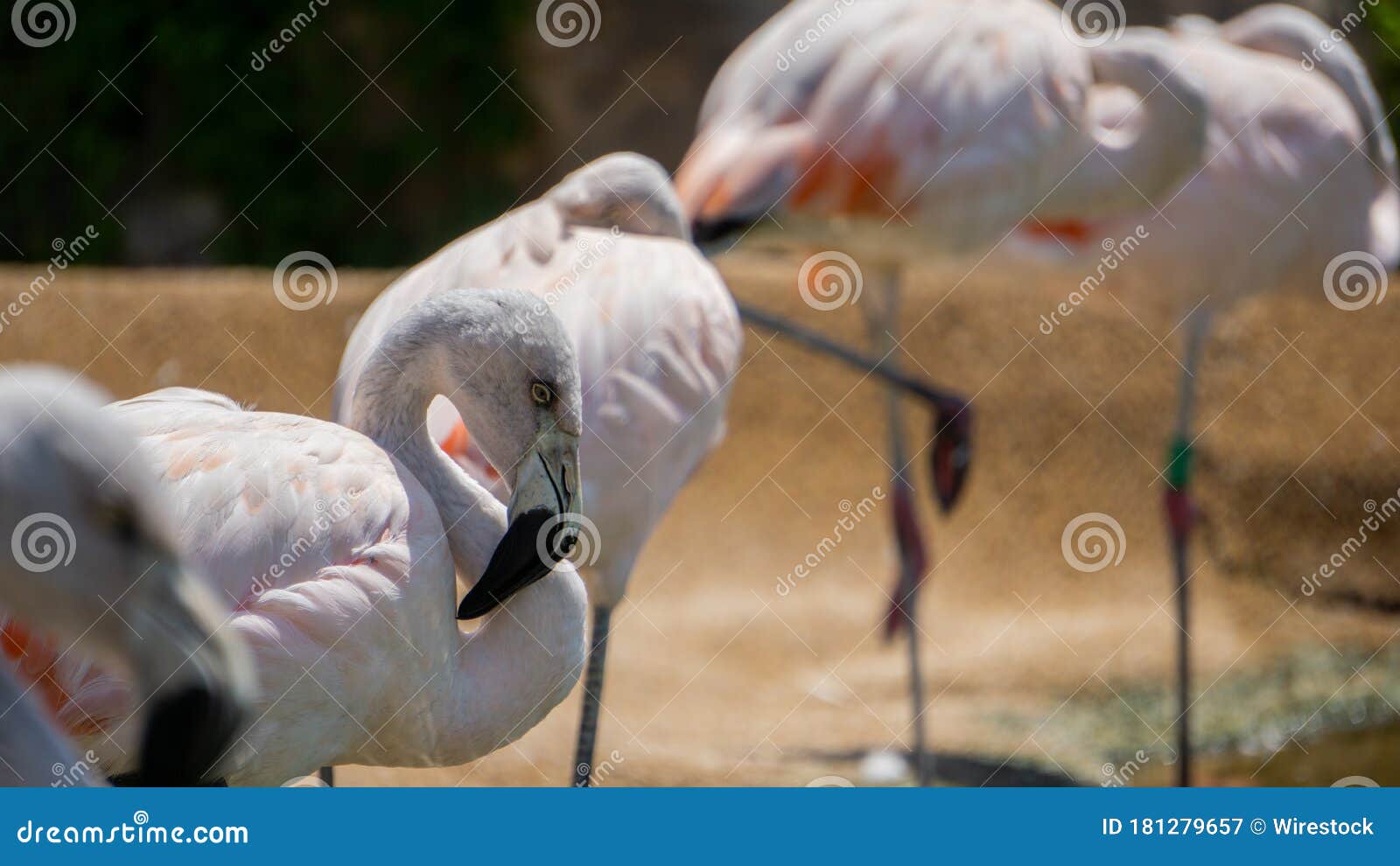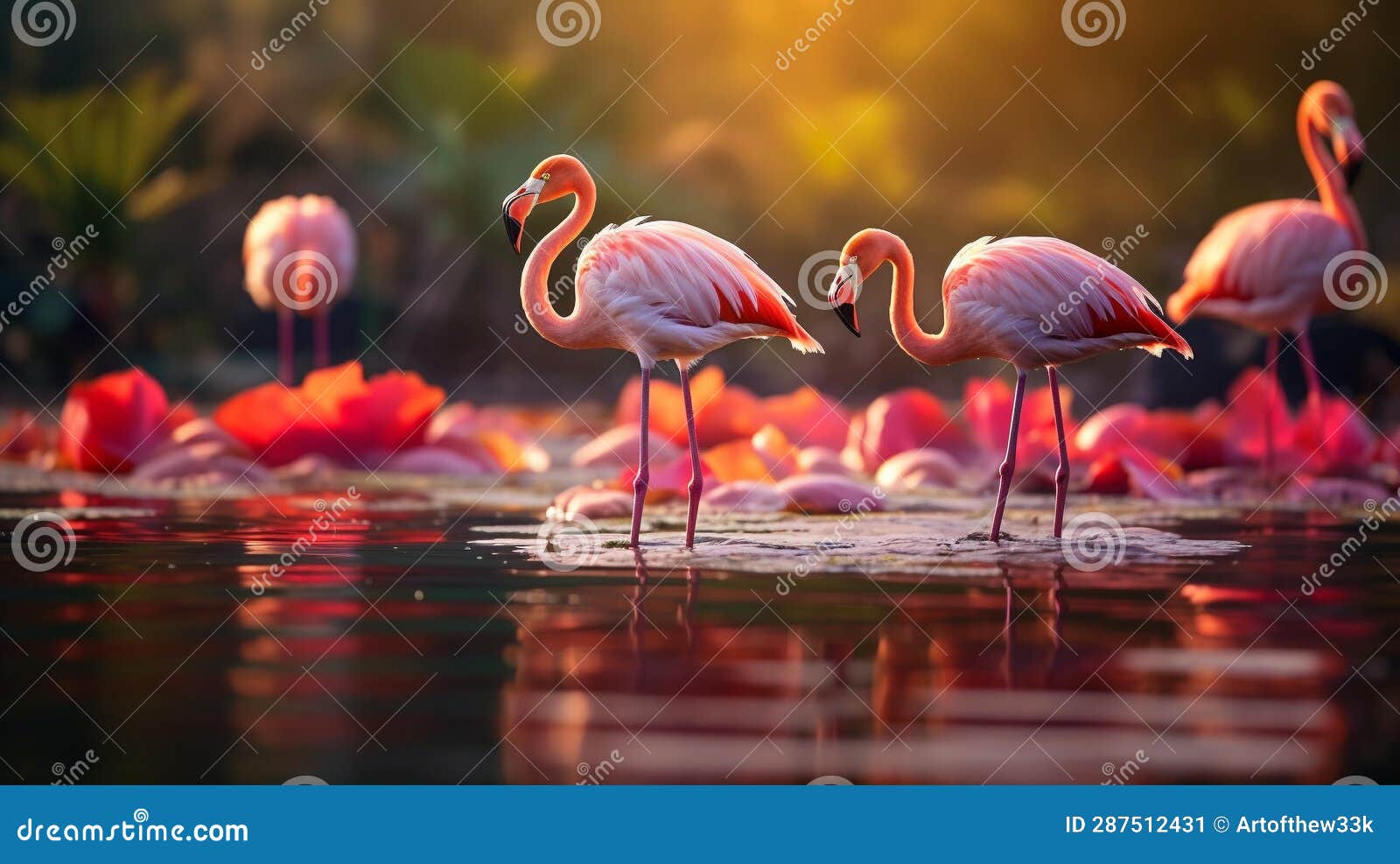The Mesmerizing World Of Live Flamingos: Nature’s Grace In Motion
Flamingos, with their vibrant plumage and elegant movements, are one of nature's most captivating creations. These stunning birds have fascinated humans for centuries, symbolizing beauty, grace, and adaptability. The mesmerizing world of live flamingos offers a glimpse into the wonders of the natural world, where each movement tells a story of survival, community, and harmony.
From their striking pink feathers to their unique feeding habits, flamingos are a testament to the intricate balance of ecosystems. These birds are not just visually appealing but also play a crucial role in maintaining the health of wetlands and other aquatic environments. Understanding their behavior and habitat is essential for appreciating the delicate ecosystems they inhabit.
In this article, we will explore the fascinating world of flamingos, delving into their biology, behavior, and the challenges they face in the wild. By understanding these majestic creatures, we can gain a deeper appreciation for the natural world and the importance of conservation efforts to protect them.
- 7starhd Movies Your Ultimate Destination For Highquality Entertainment
- Aaron Pierre Rising Star In The World Of Acting
Table of Contents
- The Biology of Flamingos: Nature's Masterpiece
- Flamingo Habitat: Where Grace Meets Adaptation
- Diet and Feeding Habits: The Secret Behind Their Pink Plumage
- Behavior and Social Structure: A Dance of Unity
- Breeding and Reproduction: The Cycle of Life
- Challenges Facing Flamingos: Threats to Their Survival
- Conservation Efforts: Protecting Nature's Grace
- Interesting Facts About Flamingos
- The Impact of Human Activities on Flamingos
- Conclusion: Celebrating the Mesmerizing World of Flamingos
The Biology of Flamingos: Nature's Masterpiece
Flamingos are among the most distinctive birds in the animal kingdom, with features that make them truly unique. Their biology is a marvel of evolution, perfectly adapted to their environment. One of the most notable characteristics of flamingos is their vibrant pink plumage, which is derived from the carotenoid pigments found in their diet.
Flamingos belong to the family Phoenicopteridae, and there are six species in total, including the Greater Flamingo, American Flamingo, and Chilean Flamingo. These birds are known for their long legs, slender necks, and distinctive downward-curved bills, which are perfectly suited for filtering food from water.
Physical Characteristics
The physical traits of flamingos are a testament to their adaptability. Their long legs allow them to wade through shallow waters, while their webbed feet provide stability on muddy surfaces. Their curved bills are specially designed for filter-feeding, enabling them to extract small organisms from water.
- 7starhd Movies Your Ultimate Destination For Film Entertainment
- 7starhd Movie Your Ultimate Destination For Movie Entertainment
- Height: Flamingos can grow up to 5 feet tall, depending on the species.
- Weight: They typically weigh between 4 to 8 pounds.
- Wingspan: Their wingspan can reach up to 5 feet, allowing them to fly long distances.
Flamingo Habitat: Where Grace Meets Adaptation
Flamingos thrive in a variety of habitats, from tropical wetlands to high-altitude lakes. Their adaptability is one of the reasons they are found across different continents, including Africa, South America, the Caribbean, and parts of Europe. These birds prefer shallow saline or alkaline lakes, where they can feed on algae, shrimp, and other small aquatic organisms.
One of the most famous flamingo habitats is Lake Nakuru in Kenya, which is home to thousands of flamingos. The alkaline waters of the lake provide an ideal environment for cyanobacteria, a primary food source for flamingos. This abundance of food attracts large flocks, creating a breathtaking spectacle of pink against the blue waters.
Adaptation to Extreme Environments
Flamingos have evolved to survive in some of the harshest environments on Earth. For example, the James's Flamingo inhabits the high-altitude lakes of the Andes, where temperatures can drop drastically at night. Their thick plumage and ability to huddle together for warmth allow them to endure these extreme conditions.
Diet and Feeding Habits: The Secret Behind Their Pink Plumage
The diet of flamingos plays a crucial role in their vibrant appearance. Their pink feathers are a result of consuming carotenoid-rich foods, such as algae and small crustaceans. These pigments are stored in their feathers, giving them their characteristic coloration.
Flamingos are filter feeders, using their specialized bills to sift through water and mud. They often feed with their heads upside down, allowing them to filter out small organisms efficiently. This unique feeding behavior is a testament to their evolutionary adaptation to their environment.
Key Components of Their Diet
- Algae: Rich in carotenoids, algae contribute to the pink coloration of flamingos.
- Shrimp and Crustaceans: These small organisms provide essential nutrients and pigments.
- Insects: Flamingos also consume insects found in wetland environments.
Behavior and Social Structure: A Dance of Unity
Flamingos are highly social birds, often forming large flocks that can number in the thousands. Their social structure is a fascinating example of cooperation and unity. These birds engage in synchronized movements, creating a mesmerizing display of grace and coordination.
One of the most striking behaviors of flamingos is their courtship dance, where they perform elaborate movements to attract mates. These dances involve head-flagging, wing-saluting, and marching in unison, creating a breathtaking spectacle.
Communication and Social Bonds
Flamingos communicate through a variety of vocalizations and body movements. Their calls range from grunts to honks, allowing them to maintain contact within the flock. Strong social bonds are essential for their survival, as they rely on each other for protection and support.
Breeding and Reproduction: The Cycle of Life
The breeding season for flamingos is a time of great activity and cooperation. During this period, flamingos build nests using mud, stones, and vegetation. These nests are designed to protect their eggs from predators and the elements.
Flamingos lay a single egg, which is incubated by both parents for about 28 to 32 days. Once hatched, the chicks are cared for by both parents, who feed them a nutrient-rich substance called "crop milk." This milk is produced in the parents' upper digestive tract and is crucial for the chick's growth and development.
Parental Care and Development
Flamingo chicks are born with gray or white feathers and develop their pink plumage over time. They remain with their parents for several weeks before joining a crèche, a group of chicks cared for collectively by adult flamingos. This communal approach to parenting ensures the survival of the young flamingos.
Challenges Facing Flamingos: Threats to Their Survival
Despite their adaptability, flamingos face numerous challenges in the wild. Habitat loss, climate change, and human activities pose significant threats to their survival. Wetland degradation and pollution have reduced the availability of suitable habitats, forcing flamingos to migrate to new areas.
Climate change is another major concern, as it affects the availability of food and water in their natural habitats. Rising temperatures and changing rainfall patterns can disrupt the delicate balance of ecosystems, impacting the health and survival of flamingos.
Human Impact on Flamingo Populations
Human activities such as mining, tourism, and agriculture have also contributed to the decline of flamingo populations. For example, the extraction of minerals from soda lakes in East Africa has led to habitat destruction, threatening the survival of flamingos in the region. Conservation efforts are essential to mitigate these threats and ensure the survival of these magnificent birds.
Conservation Efforts: Protecting Nature's Grace
Conservation organizations and governments around the world are working to protect flamingos and their habitats. Protected areas, such as national parks and wildlife reserves, have been established to safeguard these birds from human interference. Additionally, initiatives to restore wetlands and improve water quality are crucial for maintaining healthy ecosystems.
Community involvement is also vital for the success of conservation efforts. Educating local populations about the importance of flamingos and their role in the ecosystem can lead to greater awareness and support for conservation initiatives.
Success Stories in Conservation
There are several success stories in flamingo conservation, such as the restoration of Lake Nakuru in Kenya. Efforts to reduce pollution and restore water quality have led to an increase in flamingo populations in the area. Similarly, conservation programs in South America have helped stabilize the populations of James's and Andean flamingos.
Interesting Facts About Flamingos
Flamingos are full of surprises, with many fascinating facts that highlight their uniqueness. Here are some interesting facts about these remarkable birds:
- Flamingos can live up to 50 years in the wild.
- They are capable of flying at speeds of up to 35 miles per hour.
- Flamingos are known for their ability to stand on one leg, a behavior that helps them conserve heat.
- They have a highly developed sense of hearing and can recognize the calls of their chicks from a distance.
The Impact of Human Activities on Flamingos
Human activities have a profound impact on flamingos and their habitats. From pollution to habitat destruction, our actions can either harm or help these magnificent birds. It is essential for individuals, communities, and governments to work together to minimize the negative effects of human activities on flamingos.
Sustainable tourism practices, such as maintaining safe distances from flamingo habitats and reducing waste, can help protect these birds. Additionally, supporting conservation organizations and participating in local initiatives can make a significant difference in their survival.
How You Can Help
There are several ways you can contribute to the conservation of flamingos:
- Support organizations that focus on protecting wetlands and wildlife.
- Reduce your carbon footprint by adopting eco-friendly practices.
- Spread awareness about the importance of flamingos and their role in the ecosystem.
Conclusion: Celebrating the Mesmerizing World of Flamingos
The world of flamingos is a testament to the beauty and complexity of nature. From their vibrant plumage to their synchronized dances, these birds captivate the imagination and inspire awe. By understanding their biology, behavior, and the challenges they face, we can appreciate the importance of conservation efforts to protect them.
We invite you to share this article with others and join the conversation about the mesmerizing world of flamingos. Leave a comment below to let us know what you think, and explore our other articles to learn more about the wonders of the natural world. Together, we can make a difference in preserving the grace and beauty of these remarkable birds for future generations.



Detail Author:
- Name : Dr. Jerome Trantow III
- Username : oweimann
- Email : sigrid.breitenberg@blick.com
- Birthdate : 1974-01-20
- Address : 671 Reggie Ranch East Stefanieport, AK 46232
- Phone : (657) 398-3722
- Company : Hodkiewicz-Sawayn
- Job : Fabric Pressers
- Bio : Enim voluptatibus amet illum aliquam vitae et omnis. Dolor iste ipsam est. Eaque eligendi rerum tempore autem. Fugiat fugiat expedita exercitationem aut qui iste.
Socials
facebook:
- url : https://facebook.com/camryn_xx
- username : camryn_xx
- bio : Sint dicta odio et laboriosam. Impedit quo consequatur quam.
- followers : 2911
- following : 2442
instagram:
- url : https://instagram.com/camryn_dooley
- username : camryn_dooley
- bio : Amet id vero qui voluptas enim. Voluptatem rerum quis itaque tempora.
- followers : 4481
- following : 296
twitter:
- url : https://twitter.com/camryn_dev
- username : camryn_dev
- bio : Perspiciatis a temporibus facilis error magnam ab. Est placeat hic ipsum aut quo porro. Maxime nisi sit porro dolorum.
- followers : 1996
- following : 2818
tiktok:
- url : https://tiktok.com/@camryndooley
- username : camryndooley
- bio : Velit et qui et. Sunt amet error vel et.
- followers : 6179
- following : 1103